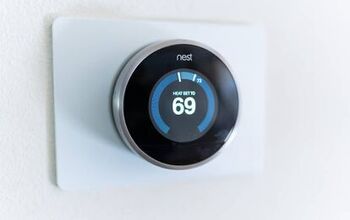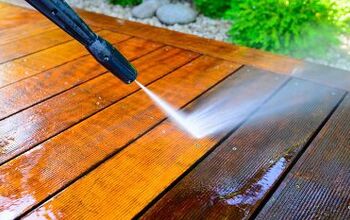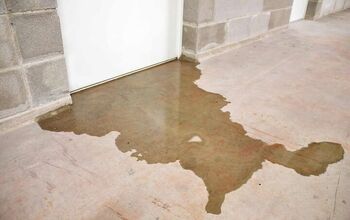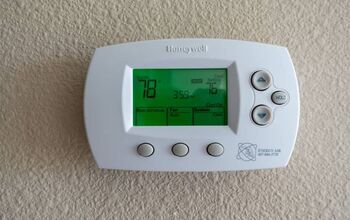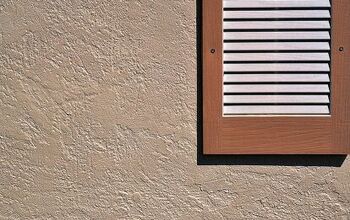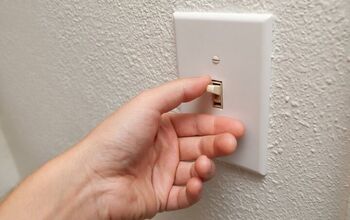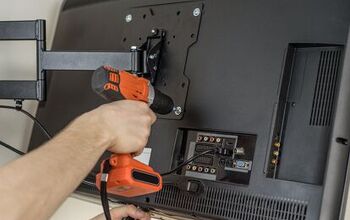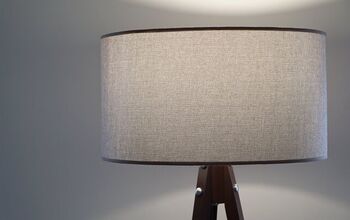10 Bugs That Can Fit Through Your Window Screens

Window screens are a game-changer when it comes to keeping bugs out of the home. Whether it's a screened-in porch or screens on your bedroom windows, window screen material allows you to let fresh air in the home, but keeps uninvited pests out. While this screen material is great at keeping most bugs away, you should know there are still a few small and sneaky insects that can fit through the tiny holes in the metal mesh.
Several tiny insects can fit through window screens. These bugs include fruit flies, gnats, no-see-ums, some midges, aphids, thrips, and baby spiders. There are several ways to prevent these bugs from slipping through your window screens. You can buy window screens with smaller holes, position flood lights away from them, and close windows at night. You can also spray varnish or insecticide on them.
It is very frustrating when you have window screens throughout your home but you still notice insects flying around inside. The unfortunate truth is some tiny bugs can fit through the tiny holes in your existing window screens. You’ll be happy to know, however, that there are ways to keep even the tiniest insects out of your home. Below is a list of common insects that can sneak through window screens, as well as ways to keep even these bugs out of your home.
10 Tiny Bugs That Can Fit Through Your Window Screens
1. No-See-Ums
One of the tiniest pests that also packs a powerful bite is the elusive no-see-um. The official name of these bugs is the Ceratopogonidae, but these pests are called no-see-ums because you can’t see them, but you certainly feel them after they bite you.
These tiny black insects not only bite, but they are small enough to fit through most window screens. These bugs are common in coastal regions, especially in sub-tropical climates like Texas and Florida.
2. Fruit Flies
Fruit flies are another very common tiny bug that can sneak through tiny holes in window screens. While these small insects don’t sting or bite, they are still inconvenient pests. Fruit flies breed on fresh fruit and other decaying organic matter (the sweeter the better). They can even hatch in your drains.
If left unchecked, fruit flies can wreak havoc on your kitchen and home. They can spread bacteria, and thousands of them can swarm your home.
3. Gnats
Gnats are another very common tiny bug that are known for sneaking through the protective barrier your window screens provide. These tiny insects don’t bite, but similar to fruit flies, they can reproduce rapidly. One female can lay over 100 eggs at a time Gnats are found all over the world, wherever there is decaying matter.
4. Thrips
Thrips are a less widespread but equally irritating small bug that can sneak through window screens undetected. These strange and slender bugs have an asymmetrical mouth and dark shiny bodies. They are barely wider than a sewing needle, which means they can sneak through your window screen mesh fairly easily.
5. Midges
Midges are another insect that bites hard in some cases and are best kept out of the house. Some types of midges are larger and can’t sneak in through small window screen holes. Unfortunately, other types of midges are quite small (no-see-ums are technically a type of biting midge), and in some cases can sneak through normal-sized window screen mesh holes.
6. Beetles
When you think of beetles you might think of large dark flying insects of various shapes, but there are many different types of beetles. Some beetles are even small enough to fit through your window screens, especially when they are young. Powder-post beetles, bark beetles, and other types can find their way into your home, even when you have window screens.
7. Moth Flies
Moth flies are flying insects that love sneaking through window screens to make a home in your drains. These insects are commonly called sewage flies because they are often found in drains and sewage lines. These flying insects sneak through your window screens before breeding and living in your home’s drains.
8. Mites
Mites are another type of very small insect that uses its small size to sneak through window screens. Mites are members of the arachnid family, and there are many types of these mites. Some are so small they live on our skin without us knowing. Others are larger, but can still fit through window screens. Many mites are harmless, but some can bite.
9. Aphids
Aphids make their homes on sap-producing plants, as they survive off this organic nectar. While they have lots of this food outdoors, they still love to sneak into homes and feed off your indoor plants. Some of these pests can make it through window screen mesh, and they pose a particular threat to greenhouses that aren’t properly sealed.
10. Young Spiders
It will come as bad news to arachnophobic readers that some tiny spiders can make it through the small holes in the window screen mesh. While fully-grown spiders are generally much too large to fit through the tiny holes in window screens, some baby spiders can easily fit through.
Spiders are very flexible and determined creatures. To minimize the chances of spiders slipping into your home through window screen mesh, ensure there are no holes or cracks along the edges of the screen.
Six Ways To Stop Bugs From Passing Through Window Screens
1. Buy Screens With Smaller Holes
One way to prevent small and determined insects from sneaking through your window screens is to buy new ones. Some screens are made specifically for tiny pests like gnats and no-see-ums.
These screens can be purchased online or at most home improvement retail stores. They are great at keeping just about any tiny bug from getting into your home. Keep in mind, however, that these small holes will also block more breeze than a typical window screen.
2. Patch Up Holes And Vulnerabilities
To help prevent small bugs from getting through your window screens, get rid of any vulnerabilities. Make sure you patch up any holes in your screens.
If you see any cracks along the edge of your screens or any small holes, make sure you seal them up. Remember, these holes and cracks will only widen over time if left untreated.
3. Spray Insecticide On Screens
Several types of insect sprays are designed for window screens. These long-lasting insecticides can be sprayed directly onto your window screens and will help keep most pests away. If you have a pet, make sure these sprays don’t pose any threats to your animals.
4. Coat Existing Screens With Varnish
Another DIY way to keep tiny bugs from sneaking through your existing window screens is to add a coat of varnish to your screens. There are different spray varnishes made for window screens.
Not only do they protect the screens from damage, but they also make the individual screen holes smaller. Remember that this process might keep bugs out but it will also prevent some of the breeze from coming through.
5. Install Outdoor Lights Away From Window Screens
Flying insects are attracted to light, especially at night, therefore it is a good idea to keep your outdoor lights away from window screens and vulnerable entrances whenever possible. Try and position your flood lights away from your window screens to prevent these bugs from gathering on them at night.
6. Close Vulnerable Windows At Night
Bugs tend to sneak through window screens more at night, especially when your indoor lights are on. To prevent small insects from sneaking through your window screens, you should close vulnerable windows at night. You can also use curtains to block light and keep bugs out.
Summing Up Bugs That Can Fit Through Window Screen Mesh
Window screens are one of the best ways to keep the most irritating and biting insects out of your home. Best of all, you can still enjoy fresh air without having to worry about getting stung or bitten. Unfortunately, some tiny insects including midges, aphids, mites, baby spiders, gnats, fruit flies, and no-see-ums can fit through most window screen mesh.
To keep these tiny insects away, buy smaller mesh, spray the existing mesh with vinyl coating, or use insecticide designed to be sprayed on window screens.
Related Guides:
- How Often Should I Replace The Screens On My Porch?
- How To Prevent Pets From Scratching Window Screens
- Cost to Convert Screened Porch to Sunroom

Tom Gaffey is an expert writer who currently resides in Washington D.C. Tom has a passion for real estate and home improvement writing, as well as travel and lifestyle writing. He lived the last twelve years in Hawaii where he worked closely with luxury resorts and event planners, mastering his knowledge of aesthetics and luxury products. This is where he found his passion for home improvement and a keen interest in DIY projects. Currently, Tom resides in Washington D.C, and also working on his debut fiction novel.
More by Tom Gaffey











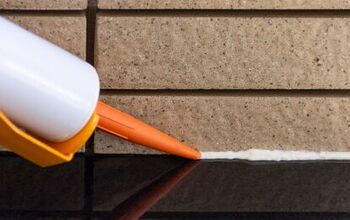
![10 Best Cordless Leaf Blowers – [2022 Reviews & Ultimate Guide]](https://cdn-fastly.upgradedhome.com/media/2023/07/31/9070789/10-best-cordless-leaf-blowers-2022-reviews-ultimate-guide.jpg?size=350x220)

![Finishing Basement Without Permit [Is It Really Illegal?]](https://cdn-fastly.upgradedhome.com/media/2023/07/31/9070078/finishing-basement-without-permit-is-it-really-illegal.jpg?size=350x220)

